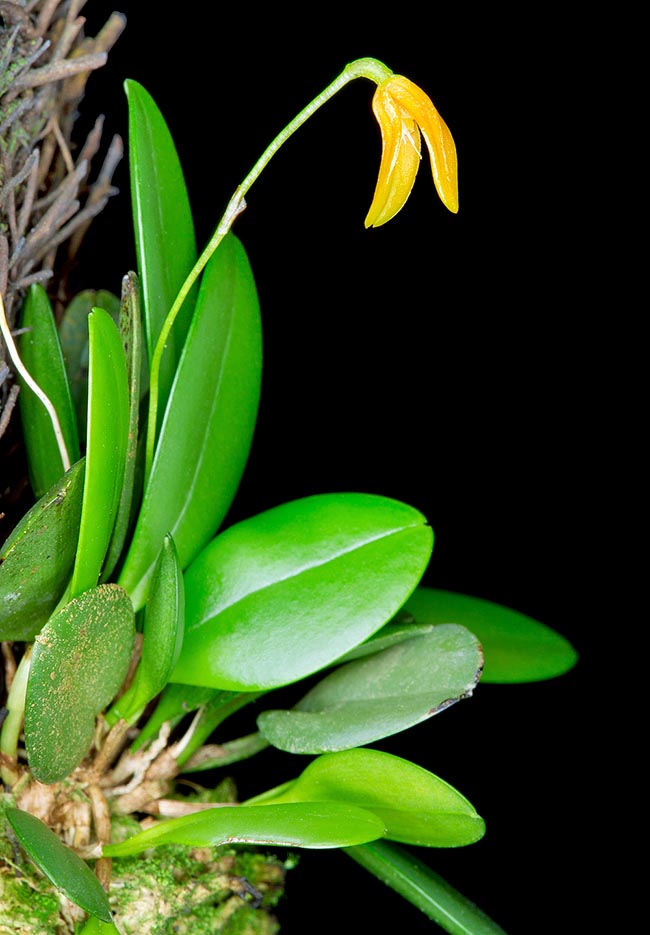Family : Orchidaceae

Text © Pietro Puccio

English translation by Mario Beltramini
The species is native to Costa Rica and Nicaragua where it grows on the branches of the trees of the humid forests, from the sea level up to about 650 m of altitude, in a climate characterized by high rainfall.
The genus is dedicated to the German engraver Veit Rudolph Specklin (-1550), author of the plates of the treatise of botany “De historia stirpium commentarii insignes” by Leonhart Fuchs (1501-1566); the specific Latin name refers to the Department of Chontales, Nicaragua, where has been found the type species and where is relatively diffused.
The Specklinia chontalensis (A.H.Heller & A.D.Hawkes) Luer (2004) is a cespitose epiphyte species with creeping rhizome and unifoliate erect stems, thin, covered by tubular sheaths, 0,5-0,7 cm long.

Cespitose epiphyte species of Costa Rica and Nicaragua, the Specklinia chontalensis is a mini orchid forming dense tufts quite rare in cultivation. The small flowers open in succession on a 3-4 cm filiform peduncle © Giuseppe Mazza
Obovate-elliptic erect leaves with just tridentate obtuse apex, 3-4,5 cm long and 0,6-1,3 cm broad, coriaceous, of intense green colour. Inflorescences, from the base of the leaf on a 3-4 cm long filiform peduncle, with yellow greenish to ochre yellow flowers opening singularly in succession; microscopically glandulous pedicel, 0,4-0,8 cm long, and ovary, almost at a right angle, with triangular section with winged edges, about 3 mm long.
Dorsal ovate-lanceolate sepal with acute apex, fleshy, microscopically glandulous on the two faces, on the back keeled and internally bullate (as if it was covered by tiny transparent bladders), 1-1,1 cm long and 0,3 cm broad, elliptic lateral sepals with acute apex, microscopically glandulous on both faces, united almost up to the apex, about 1 cm long and, together, 0,4 cm broad.
Obliquely falcate petals with acute apex, about 3 mm long and 1 mm broad, oblong labellum with obtuse apex, grooved, with two small erect lobes at the base, papillose, fleshy, about 3 mm long and 1 mm broad, and clavate column, toothed at the apex, about 2,5 mm long.
It reproduces by seed, in vitro, and by division of tillered tufts.
Mini orchid fairly rare in cultivation forming dense tufts not taller than 6 cm, it needs a semi-shady position, intermediate to warm temperatures, high humidity, 75-85 %, and air in constant light movement.
It is usually mounted on branches, pieces of bark or rafts of various material covered by sphagnum to maintain the humidity at the thin roots. Frequent and regular watering, not having a precise period of rest, but without stagnations, utilizing rainwater, by reverse osmosis or de-mineralized. Ideal for terraria where is possible to duly adjust all environmental parametres.
The species is inscribed in the appendix II of the CITES (species whose trade is internationally ruled).
Synonyms: Pleurothallis chontalensis A.H.Heller & A.D.Hawkes (1966); Sarcinula chontalensis (A.H.Heller & A.D.Hawkes) Luer (2006).
